Nopales: History + How to Clean and Eat Cactus
Learn how to clean nopales like a pro with my step-by-step guide accompanied by helpful photos. All you need is a good knife to perfect the technique of removing the thorns and edges from cactus paddles so that you can begin to incorporate this delicious and nutritious ingredient into more meals. They’re perfect to make ensalada de nopales and other meatless Mexican recipes!

WHAT ARE NOPALES?
Nopales are the flat, oval-shaped pads or paddles of the prickly pear cactus (Opuntia genus). They are a common ingredient in southwestern and Mexican cuisine where they are cooked or blended into agua fresca and jugos. In my family, cooked nopales are a family favorite to serve alongside carne asada and grilled cebollitas. A few more fun facts:
- Flavor: Cactus flavor is often described as tangy and slightly citrusy
- Texture: Nopales are known for their unique texture, similar to green beans. The slimy liquid, we call “baba,” is released during the cooking process
- Nutrients: They are a good source of dietary fiber, vitamins, and minerals, including vitamin C, magnesium, and calcium
NOPALES AND MEXICAN CUISINE
- Cactus paddles have been a staple ingredient in Mexican cuisine for centuries, dating back to pre-Columbian times.
- Indigenous peoples, such as the Aztecs and the Maya, cultivated and consumed cactus pads for their nutritional value and medicinal properties.
- Today, they are still widely used in Mexican dishes, valued for their unique texture, flavor, versatility, and health benefits.
- They are enjoyed in a variety of traditional dishes, including tacos, gorditas, huaraches, quesadillas, salads, guidados (stews), and even drinks!
WHAT ARE THE BENEFITS OF EATING CACTUS?
Dishes with cactus pads can be found on restaurant menus throughout Mexico and nopal recipes are growing in popularity in the U.S. One reason may be due to the health benefits of nopales. Cactus paddle is:
- Rich in essential nutrients, including vitamins A and C, as well as minerals such as magnesium, potassium, and calcium.
- High in dietary fiber, which promotes digestive health, helps maintain a feeling of fullness, and supports a healthy weight.
- Helps control blood sugar, some studies suggest that nopales cactus may help regulate blood sugar levels, making them a potential dietary choice for individuals with diabetes or those at risk of developing diabetes.
- Low in calories, making them a nutritious addition to meals without contributing to excessive calorie intake.
- Contains antioxidant properties that help neutralize free radicals in the body, potentially reducing the risk of chronic diseases and supporting overall health.
WHERE TO BUY NOPALES
Find fresh nopales in grocery stores that specialize in Mexican food. A few mainstream grocery stores also carry them in the fresh produce section. They are usually sold as whole paddles, which require cleaning, or cleaned and chopped in small bags (these are convenient and super easy to use). In Mexico, California, and other arid areas, you can even harvest them directly from prickly pear cactus plants.
HOW TO CLEAN NOPALES
Before learning how to cook with cactus paddle, it’s essential to learn how to clean nopales because not everybody has access to the freshly cleaned and chopped cactus that is available in some Mexican grocery stores. Also, if you’re lucky to live in an area where cactus grows, you can pick and clean your own paddles!
1. Prepare nopales
- Put on your kitchen gloves or use a kitchen towel or tongs to protect your hands from the prickly spines. Nopal cactus have tiny, hair-like thorns that can be irritating.
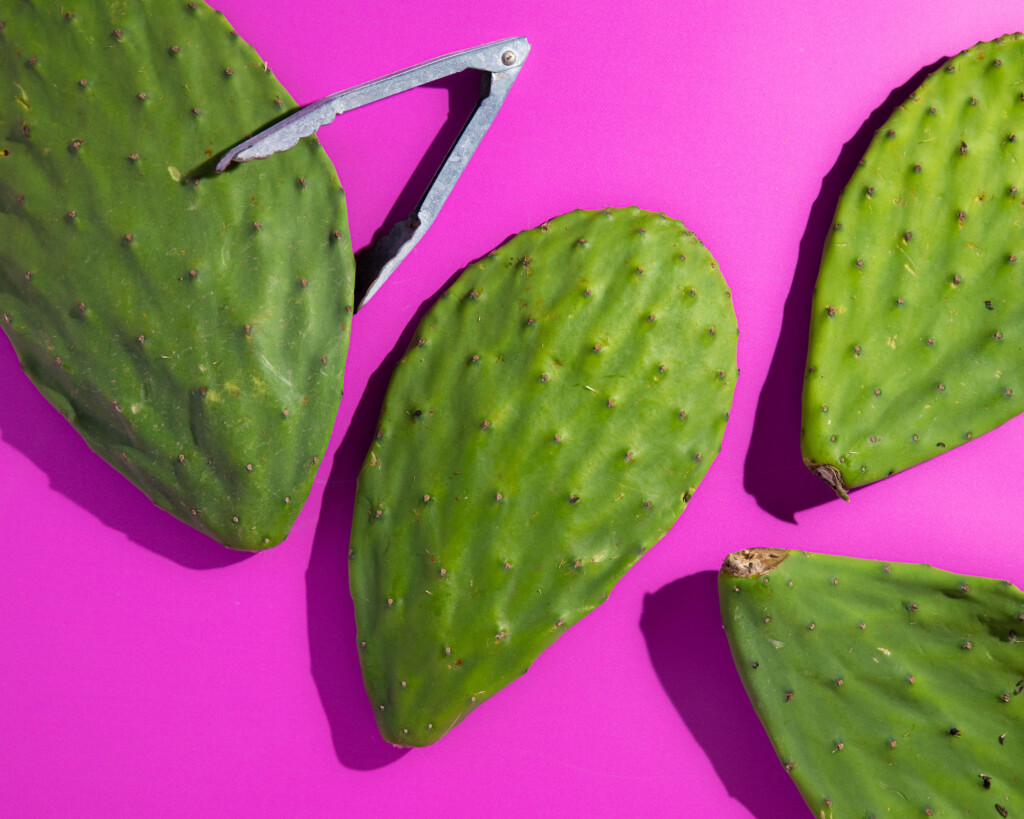
2. Remove the thorns
- Hold the cactus paddle to keep it steady. Then, use a knife to carefully remove the thorns, gliding it upwards, in the opposite direction that they grow.

3. Trim the edges
- Place the cactus pad on a cutting board and use a sharp knife to trim off the edges.

4. Remove base
- Cut away both the thorny edges and the base of the pad.

5. Rinse
- Check for any thorns you may have missed before rinsing the nopales under running water to remove any dirt or residual spines.

6. Slice, dice, or chop
- Once the nopales are peeled and cleaned, you can slice or chop them according to your recipe’s requirements.

HOW DO YOU EAT NOPALES?
Once you’ve mastered the art of cleaning cactus pads, here are a few ways to add nopales into your diet:
- Grilling them whole with olive oil and seasoning them with a sprinkle of salt, paprika, and a sprinkle of lime juice – this is one of my favorite vegetarian Mexican dishes!
- Chopping them for a traditional cactus salad and adding this to tacos, tostadas, and gorditas
- Sautéing them with onion and adding in scrambled eggs
- Adding them fresh in my jugo verde

FREQUENTLY ASKED QUESTIONS
What do nopales taste like?
Cactus flavor is often described as tangy and slightly citrusy.
Are nopales good for the gut?
Yes, nopales are beneficial for gut health due to their high fiber content, which aids digestion and promotes healthy bowel movements, contributing to overall gastrointestinal well-being.
Nopales: How to pronounce
Nopales is pronounced “noh-PAH-les” and if you’re wondering how to say nopales in English, it’s typically translated to “cactus paddles” or simply “cactus.”
Can you eat nopales raw?
Yes, nopales can be eaten raw, although they are usually cooked in Mexican cuisine. When eaten raw, nopales have a crunchy texture (like cooked green beans) and a slightly tangy flavor. They’re usually used raw when blended into aguas frescas and jugo verde (Mexican green juice).
RECOMMENDED BY LOLA
Shun 8″ Chef Knife

When chopping, slicing, dicing, and even peeling nopales, this one is my go-to chef knife. I love the lightweight feel of Shun knives. VIEW PRODUCT
LOOKING FOR MORE INSPIRATION?
- Ensalada de Nopales (Cactus Salad)
- Going Green with Cactus Ceviche
- Agua de Tuna (Prickly Pear Agua Fresca)
- Jugo Verde (Mexican Green Juice)
- When to Harvest Tomatillos + Best Tomatillo Salsa Recipes
- Tijuana Caesar Salad
- Nopalitos and Red Pepper Salad
- Cactus Pineapple Smoothie

How to Clean Nopales
Equipment
- Kitchen gloves
- Kitchen towel
- Bowl
Ingredients
- 5 nopales (cactus paddles)
Instructions
- Preparation: Put on your kitchen gloves or use a kitchen towel or tongs to protect your hands from the prickly spines. Nopales have tiny, hair-like thorns that can be irritating.
- Remove the thorns: Hold the cactus paddle to keep it steady. Then, use a knife to carefully remove the thorns, gliding it upwards, in the opposite direction that they grow.
- Trim the edges: Place the cactus pad on a cutting board and use a sharp knife to trim off the edges.
- Remove base: Cut away both the thorny edges and the base of the pad.
- Rinse: Check for any thorns you may have missed before rinsing the nopales under running water to remove any dirt or residual spines.
- Slice or chop: Once the nopales are peeled and cleaned, you can slice or chop them according to your recipe’s requirements.
A Note from Lola
Originally published on June 1, 2022 / Updated on November 10, 2023
Lola’s Cocina is a small business that earns various revenue streams. This includes sponsored posts and affiliate commissions from linked products, which I use and love, at no extra cost to readers. This income helps sustains the site.

Lola Wiarco Dweck
Lola is a Mexican-American recipe developer, writer, and cooking instructor who loves sharing her culture with the world. Growing up in California and spending summers in Mexico, Lola celebrates her family’s Mexican recipes and vibrant culture through Lola’s Cocina.











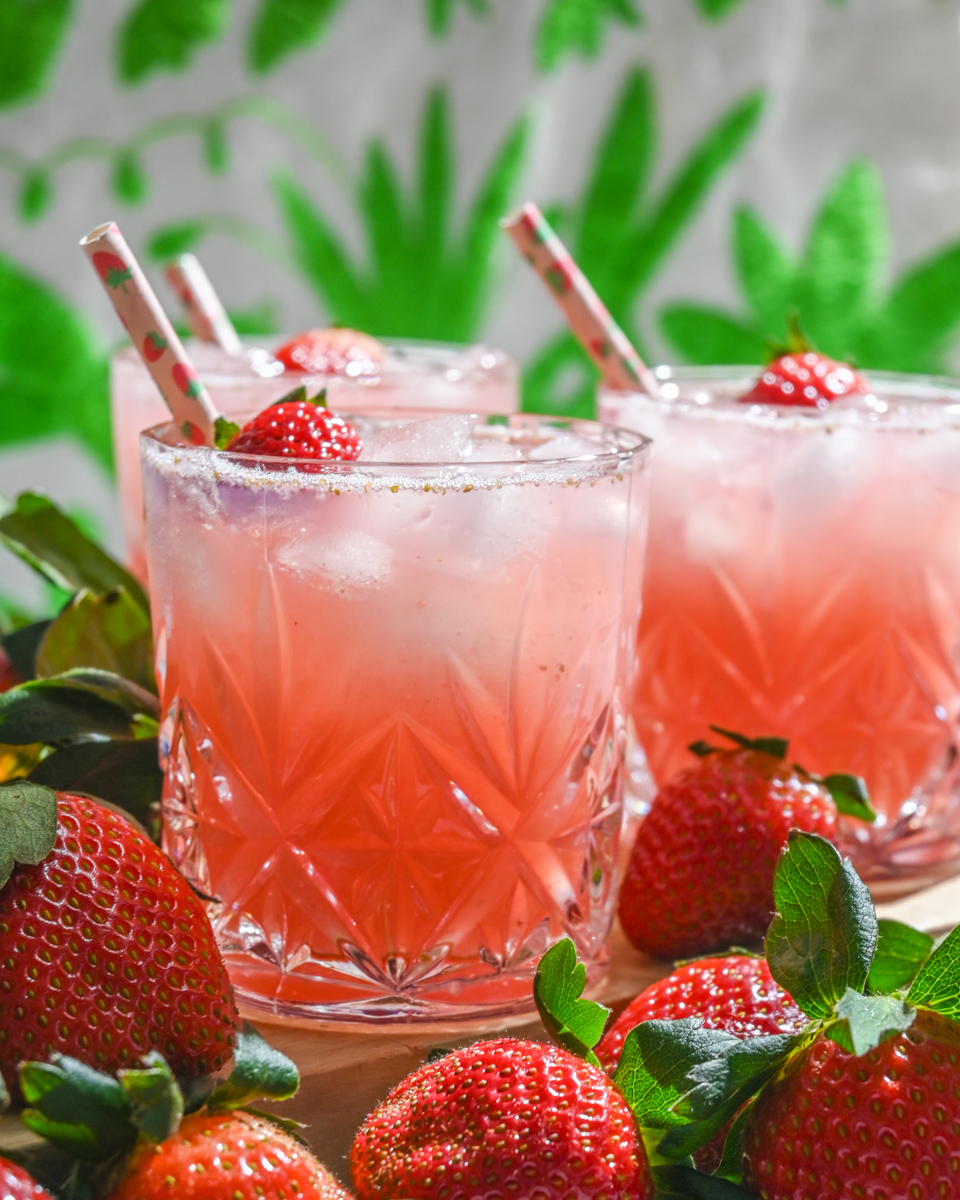
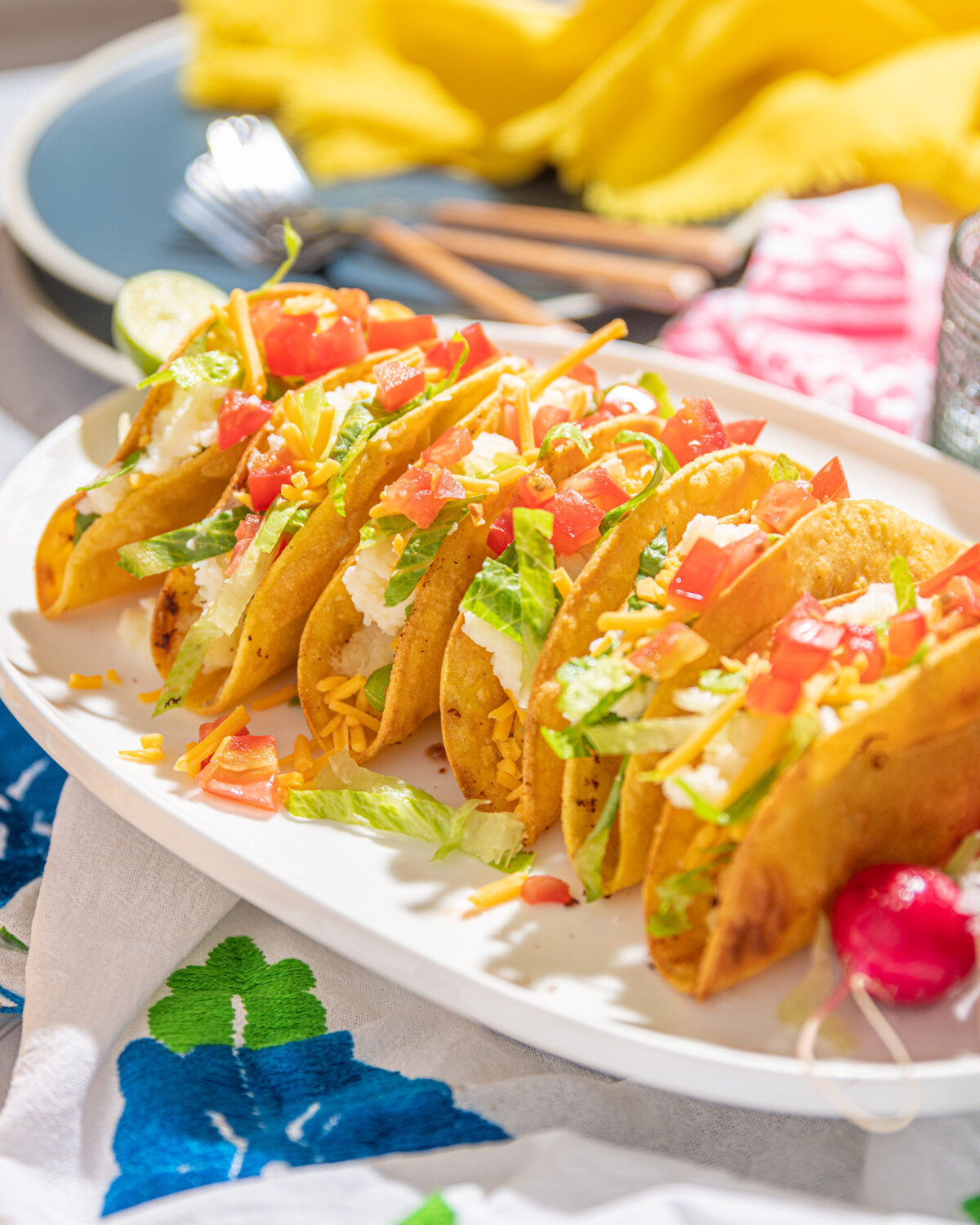
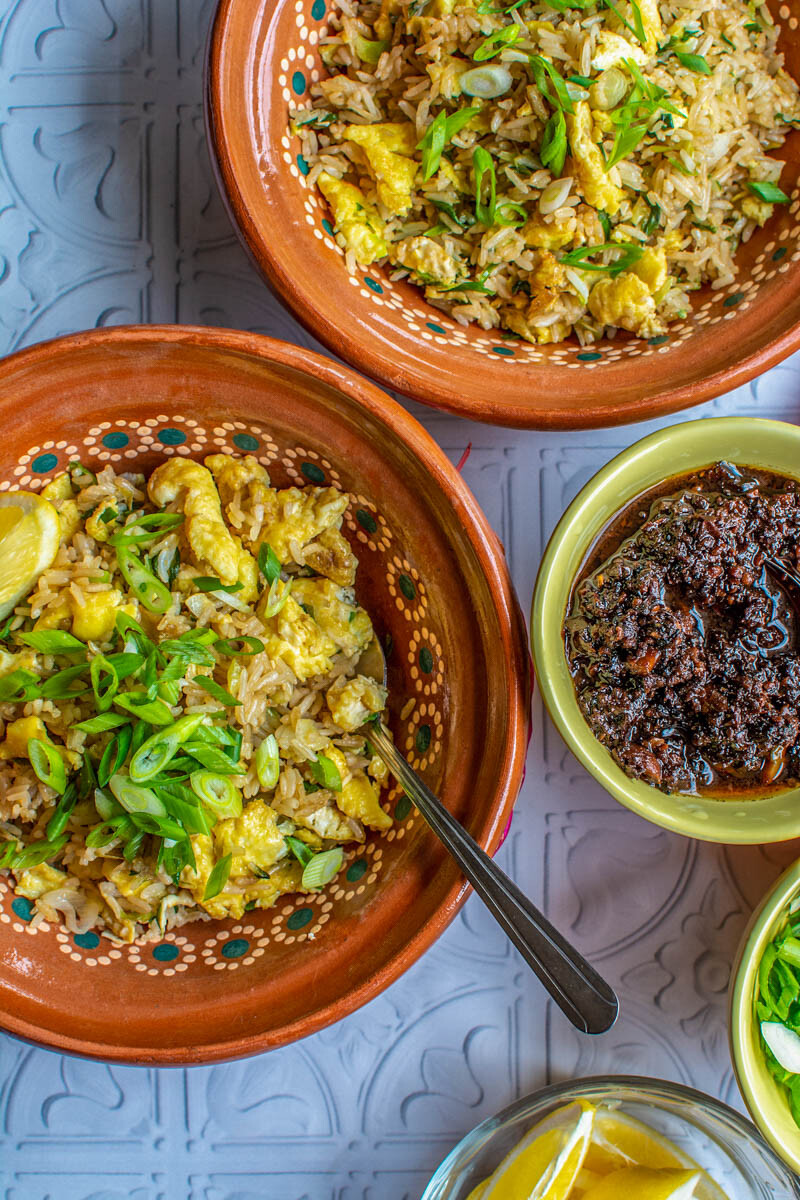
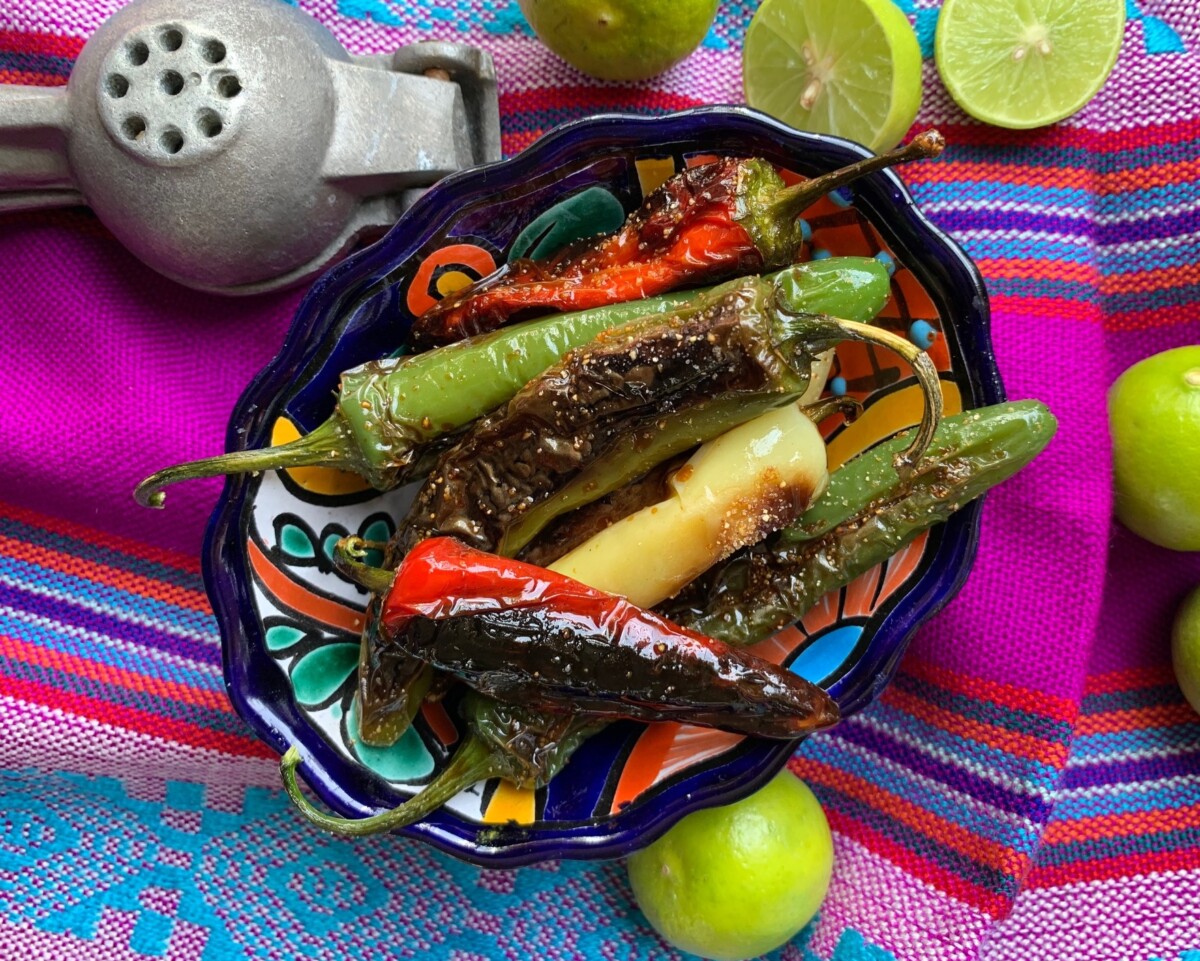
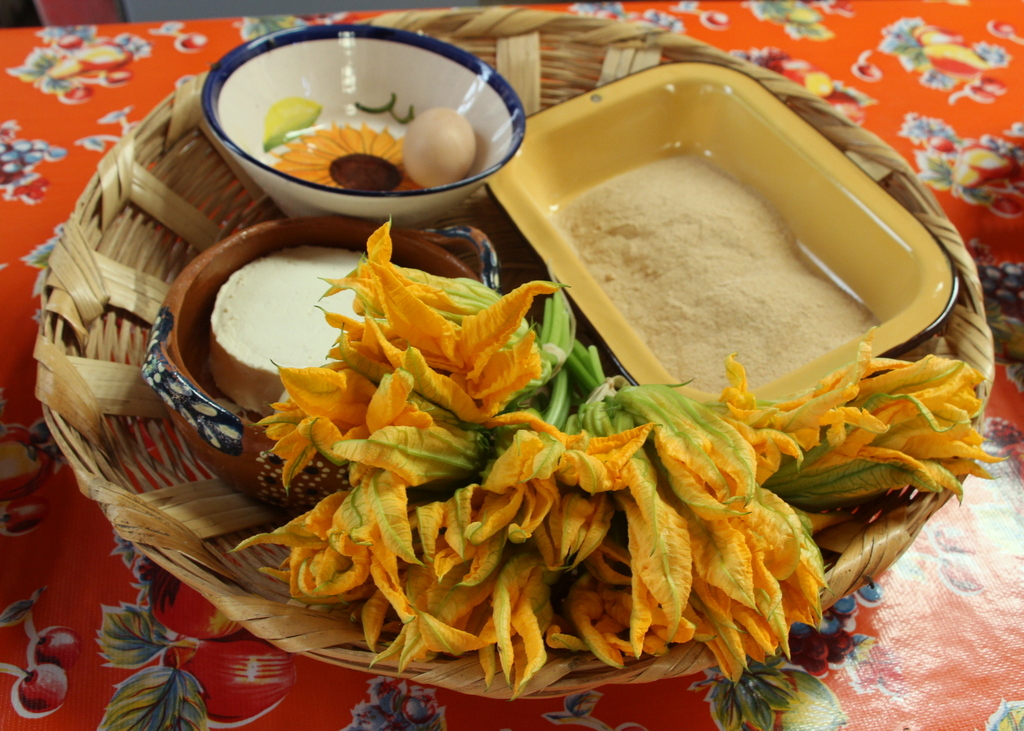
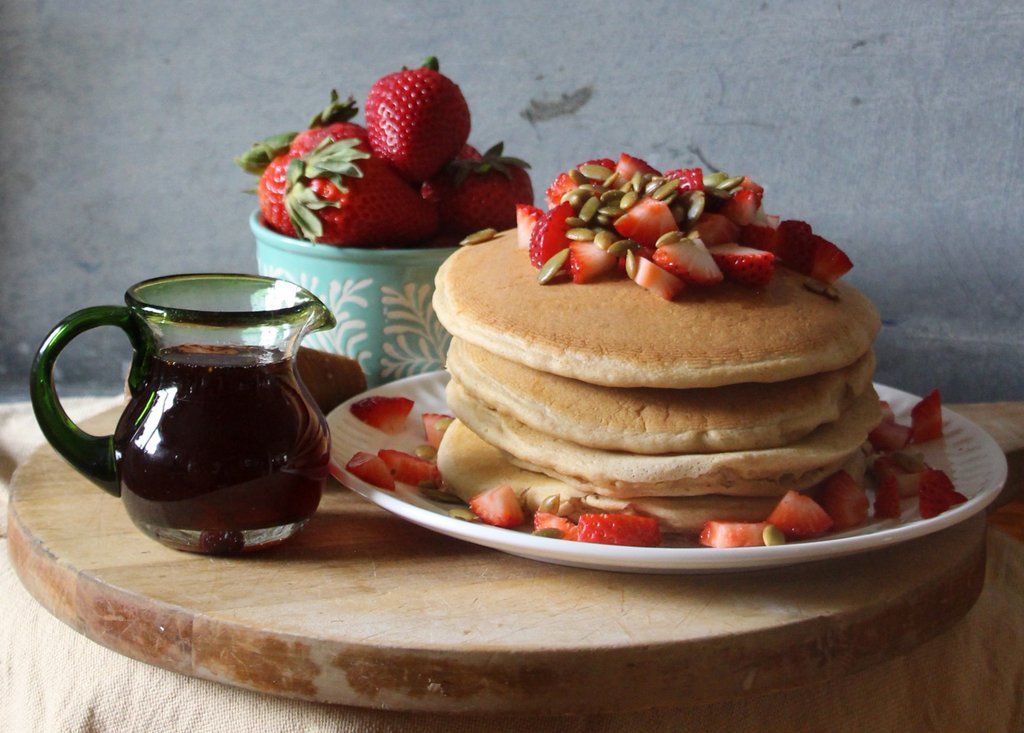
Such an informative post! The step by step pictures are so helpful!
Thank you! I find that nopales can be intimidating for some people, so am hoping that others find it helpful as well.